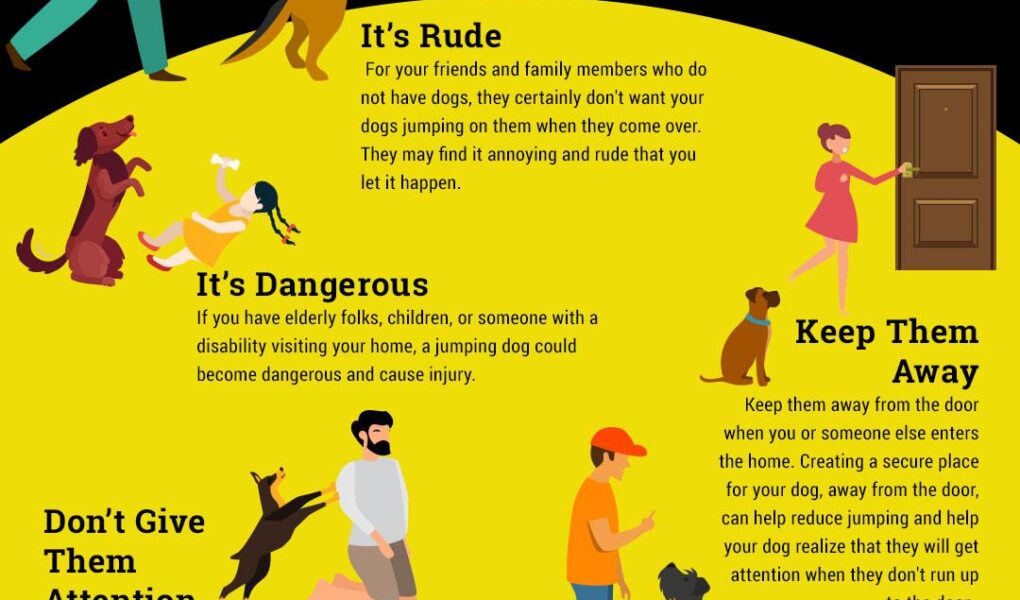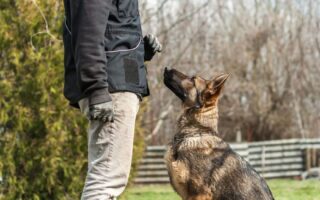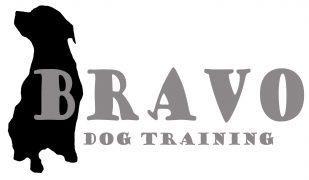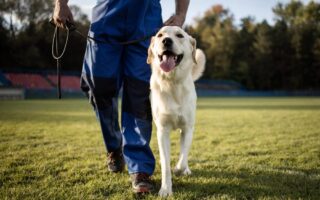Title: Taming the Leap: Effective Strategies to Train Your Dog Not to Jump
In a world where tails wag with uncontainable joy and paws sway in a rhythm of pure excitement, one common quirk often breaks the blissful dance: jumping. For many dog owners, the affectionate leap of their furry friend can feel like a joyous welcome, a testament to their pup’s boundless enthusiasm. Yet, this exuberance can quickly become overwhelming, especially when greeting guests or navigating crowded spaces. Understanding the dynamics of this behavior is essential—not just for the comfort of others, but also for your dog’s ability to engage with the world without boundaries. In this article, we will explore practical and effective techniques to train your dog not to jump, ensuring that exuberance and etiquette can coexist harmoniously. Join us as we delve into the heart of canine communication and discover how to transform that exuberant leap into a polite greeting.
Table of Contents
- Understanding Canine Behavior and the Root Causes of Jumping
- Effective Training Techniques for Encouraging Calm Greetings
- Creating a Consistent Environment to Reinforce Positive Behavior
- The Role of Reward Systems in Reducing Jumping Habits
- Q&A
- Wrapping Up
Understanding Canine Behavior and the Root Causes of Jumping
To effectively address the issue of jumping, it’s essential to first comprehend the underlying motivations behind this behavior. Dogs may leap for a variety of reasons, including excitement, the desire for attention, or even as a means of greeting. Understanding these triggers is crucial in modifying your dog’s behavior. Here are some common reasons why dogs jump:
- Excitement: When dogs are happy to see you or others, jumping becomes a natural expression of their enthusiasm.
- Attention Seeking: Dogs quickly learn that jumping can elicit a reaction, whether it’s laughter, petting, or even scolding.
- Social Greetings: In the canine world, jumping can signal a friendly greeting, mirroring how they engage with other dogs.
Each of these motivations can be addressed through consistent training and positive reinforcement. It’s vital to redirect your dog’s energy and teach alternative behaviors that are more appropriate. For instance, encouraging your dog to sit when greeting people can help settle their excitement and establish a calm routine. Below is a simple comparison of effective alternatives versus jumping:
| Behavior | Alternative Action |
|---|---|
| Jumping on people | Sitting or staying down |
| Barking when excited | Quietly observing |
| Gaining attention by nipping | Gently nudging for pets |
Effective Training Techniques for Encouraging Calm Greetings
Training your dog to greet guests calmly is an essential skill that enhances both your dog’s behavior and the comfort of your visitors. Implementing gradual desensitization techniques can help your furry friend learn appropriate greeting behaviors. Start by having a friend approach your home and ring the doorbell without entering. At this point, calmly reward your dog for remaining in a sitting or lying position with treats or praise. Consistency is key, so make sure to repeat this process several times, gradually increasing the intensity of the situation, such as having your friend enter or talk to the dog from a distance.
Incorporating structured practice sessions can significantly improve your dog’s greeting manners. Consider setting up a “greet and retreat” strategy where you teach your dog to stay in a designated area until the guests are settled. This could involve:
- Positive reinforcement: Use treats and praise to reward your dog for staying in the designated spot.
- Redirecting energy: When your dog behaves disruptively, redirect them to a toy or offer a distraction instead of scolding.
- Consistent commands: Use a consistent command like “enough” or “meet and greet” when it’s time for your dog to engage, ensuring clarity in your training.
Creating a Consistent Environment to Reinforce Positive Behavior
Establishing a stable environment that consistently supports desired behaviors is crucial when training your dog not to jump. This involves creating clear rules and ensuring that every family member applies these rules uniformly. Start by designating specific areas where your dog is allowed to greet people, such as a mat or a designated spot in the living room. This boundary helps communicate what is acceptable and reinforces the idea that jumping is only appropriate in certain locations. When your dog stays in the designated area, reward them with praise or treats, encouraging a calm demeanor.
Consistency is key, not just in physical boundaries, but also in reactions to your dog’s behavior. Everyone in the household should follow the same guidelines to avoid confusion and mixed signals. To illustrate this, consider implementing a simple reward system, displayed in the table below:
| Behavior | Action | Reward |
|---|---|---|
| Stays calm when visitors arrive | Ignore jumping | Verbal praise or treat |
| Sits on the mat | Encourage them | Higher-value treat |
| Waits patiently for attention | Give affection | Playtime |
By fostering a consistent environment and applying uniform response strategies, your dog will more effectively learn that calm behavior is what earns them valuable rewards. This cooperative approach unites all members of the household in promoting proper etiquette and discouraging unwanted jumping habits.
The Role of Reward Systems in Reducing Jumping Habits
Implementing a reward system is an effective strategy when addressing unwanted jumping behaviors in dogs. Utilizing positive reinforcement can significantly impact how your dog learns to respond in social situations. With this approach, your dog is encouraged to remain calm and controlled by associating good behavior with enticing rewards. It’s essential to define clear rules around jumping behavior so that your dog understands when it is appropriate and when it is not. Focus on rewarding behaviors such as sitting, staying, or keeping all four paws on the floor instead of jumping. This creates a positive link between desired actions and rewards, reinforcing the message that calmness is preferable.
To maximize the effectiveness of the reward system, consider the following strategies:
- Consistency: Always reward good behavior with treats or praise.
- Timing: Offer rewards immediately after the desired behavior to create strong associations.
- Variety: Use a mix of treats, toys, and affection to keep your dog motivated.
- Gradual Progression: Start in low-distraction environments and slowly increase challenges as your dog learns.
| Behavior | Reward |
|---|---|
| Sitting calmly | Treat and praise |
| Remaining on the floor | Favorite toy |
| Ignoring visitors | Playtime |
Q&A
Q&A: How to Train Your Dog Not to Jump
Q: Why do dogs jump on people?
A: Dogs jump for a variety of reasons. Often, it’s their way of greeting you or expressing excitement. They may also be seeking attention or trying to assert dominance. Jumping is a natural canine behavior, but it’s essential for them to learn appropriate ways to greet humans.
Q: What are the negative consequences of a dog jumping on people?
A: While it may seem harmless, jumping can be disruptive and even dangerous. It may knock over small children or elderly individuals, damage clothing, and create unwanted attention in public places. Additionally, persistent jumping can reinforce bad habits that are difficult to break later.
Q: What is the first step in training my dog not to jump?
A: The first step is to understand your dog’s behavior. Observe when and why they jump. This will help you identify triggers and start training effectively. Equally important is to practice patience and consistency, as changing ingrained behaviors does take time.
Q: How can I teach my dog an alternative behavior?
A: Training your dog to sit or stay is an effective alternative. Whenever your dog starts to jump, redirect them by calmly asking them to sit. When they obey, reward them immediately with praise or a treat. By reinforcing the desired behavior, they’ll learn that sitting gets them the attention they seek.
Q: Should I punish my dog for jumping?
A: No, punishment is not an effective method for changing behavior. It can lead to confusion or fear, damaging the trust between you and your dog. Instead, focus on positive reinforcement. Reward good behaviors and ignore the jumping, as attention (even negative) can reinforce unwanted actions.
Q: How can I prevent my dog from jumping when guests arrive?
A: Preparation is key. Before guests arrive, put your dog on a leash or in a separate area. When your guests come in, ask them to ignore your dog until they settle down. Once your dog is calm, allow interaction. This reinforces that calm behavior is what earns them attention.
Q: How long will it take for my dog to stop jumping?
A: The timeline can vary significantly based on your dog’s age, breed, and temperament. It may take a few weeks to several months to see consistent improvement. Consistency in training and clear communication will greatly influence how quickly your dog learns.
Q: What should I do if my dog continues to jump, despite my efforts?
A: If your dog continues to jump despite your best training efforts, consider consulting a professional dog trainer or behaviorist. They can provide personalized strategies and support that will help address the issue more effectively.
Q: Can jumping be a sign of more serious behavioral issues?
A: In some cases, excessive jumping might indicate anxiety or a lack of exercise. Ensure your dog is getting enough physical and mental stimulation. If jumping is accompanied by other problematic behaviors, it’s best to seek advice from a vet or a trainer.
Q: Do all dogs require the same training approach?
A: Not necessarily! Each dog is unique. Tailor your approach based on your dog’s breed, personality, and past experiences. What works for one dog may not work for another, so being adaptable is crucial for successful training.
By addressing your dog’s jumping behavior with patience, understanding, and consistent training, you can foster a respectful relationship that benefits both you and your furry friend.
Wrapping Up
As our journey through the art of training your dog not to jump comes to a close, it’s important to remember that patience, consistency, and understanding are your best allies. Every pup is unique, and the key to a harmonious bond lies in the gentle guidance you provide. By implementing positive reinforcement and setting clear boundaries, you lay the groundwork for not just a well-mannered dog, but a deeper relationship built on trust and respect.
Embrace the small victories, celebrate the milestones, and most importantly, enjoy the process. With time and dedication, your furry friend will learn that there are more delightful ways to express their joy than leaping into the air. After all, the journey of training is as enriching for you as it is for them. So, step forward with confidence, and let the adventure of companionship continue—one calm, happy moment at a time.



